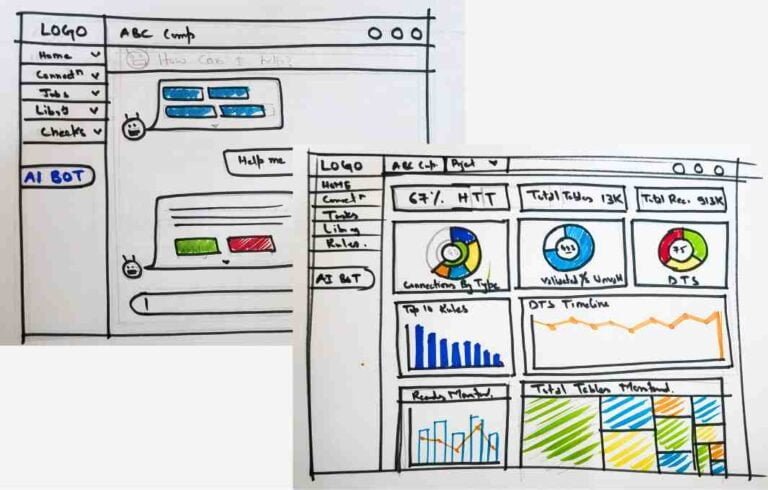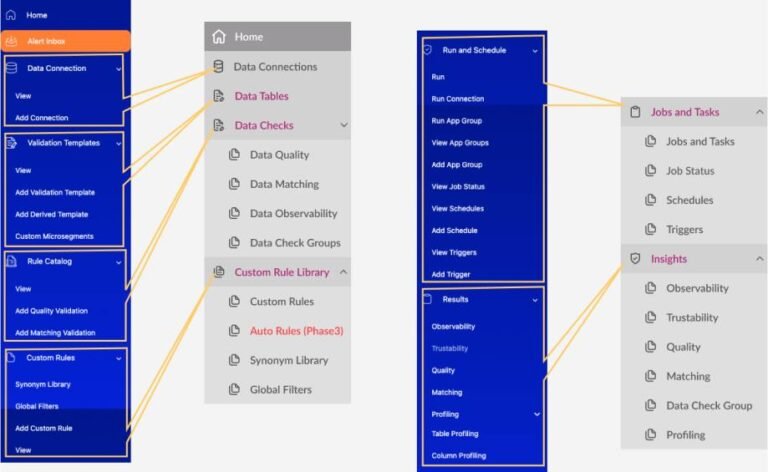
The project aims to revamp the UI/UX of a data trustability application catering to enterprises with extensive data assets. The proposed solution entails a comprehensive redesign to modernize the UI, standardize taxonomy, streamline navigation, enhance data visualization, and introduce a personified AI Assistant for validation tasks.
A Silicon Valley startup having state of the art technology for creating Autonomous Data Quality Validation for all the data in any enterprise. They had a proof of concept level product UI ready, we created a much learnable, contemporary and easy to use experience for the enterprise users.


Business User
“I want a simplified user experience with clear task flows so that I can easily validate the quality of my data without needing deep technical knowledge. I anticipate intuitive visualizations that’ll transform complex data into actionable insights effortlessly.”

Technical User
“I want a streamlined and user-friendly process for managing data connections and validation checks, so that I can easily onboard datasets into different projects and ensure data quality without manual effort.”

Technical User
“I want an intuitive and comprehensive user interface with task-oriented workflows, so that I can efficiently navigate and validate data, manage custom rules for data tables, and easily communicate insights at different levels of administration.”
Three seasoned design experts conducted a heuristic evaluation focusing on distinct aspects of usability. Their collective evaluation aimed to refine the design aspects, prioritizing user-centric improvements like usability, learnability, findability, standardization, etc.



User flows were crafted after a comprehensive assessment of the current proof-of-concept product, ensuring a systematic approach to understanding user interactions, needs, and navigation within the application.

Concepts were iteratively developed through multiple rounds of paper sketches before jumping to the digital medium and preparing the wireframes.

The app’s structure and navigation were redesigned, improving how users find features. This revamp focused on reducing clutter by refining options and optimizing taxonomy, leading to a more intuitive and efficient navigation system.

Interactive design patterns like table interactions, data filtering, status indicators, etc, were introduced for enhancing the usability.





The Low-fidelity wireframes were refined with the added visual design in accordance with the brand identity of the product. Furthermore, interactions were designed and highlighted using zero-code clickable prototypes.








The AI assistant was personified as a “Buck” character which also serves as the brand mascot. This adds to the visibility, interactivity and engagement of the feature.

After research and iterations, following interaction guidelines were defined to increase the perceived credibility and engagement of the AI assistant:




We designed a complete Design system, comprising of all common UX patterns, to make the application consistent and make a matured Enterprise Application. Some examples of component specifications and visual style guide from the design system.


Design Specifications Handoff:
Recommendations for Specification Corrections:
Identification of Bugs and Loopholes:
Multiple Rounds of Testing and Feedback:
Refinement of Design Specifications:
1st Floor, Business Square, Baner – Pashan Link Rd, Pashan, Pune, Maharashtra 411021
Ringslang 124. 1187-BT, Amstelveen, The Netherlands
© 2025 All Rights Reserved.